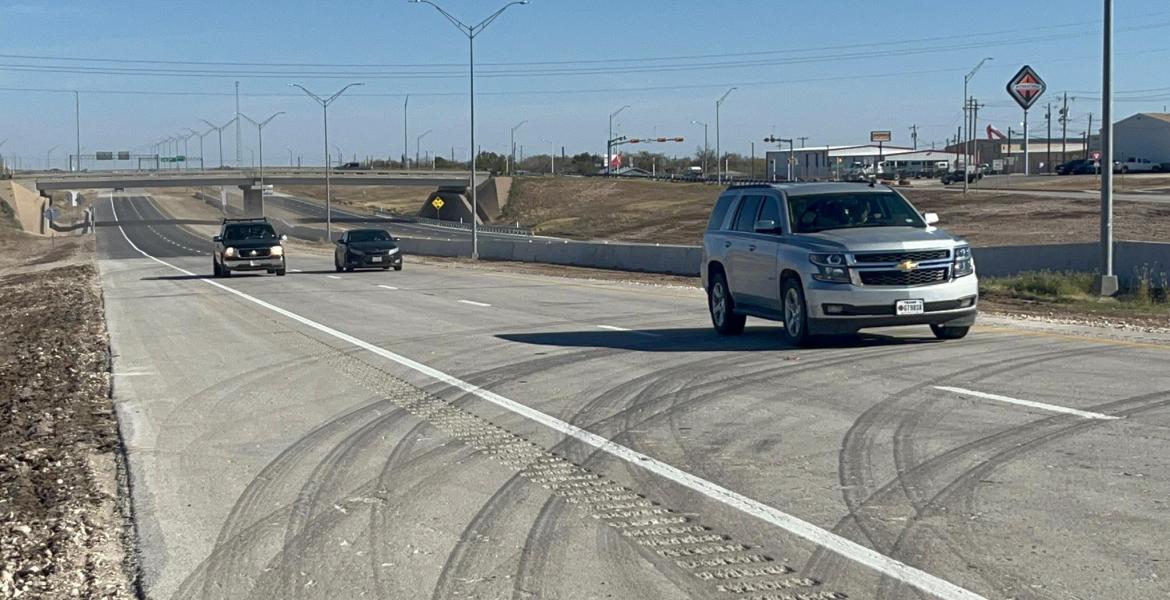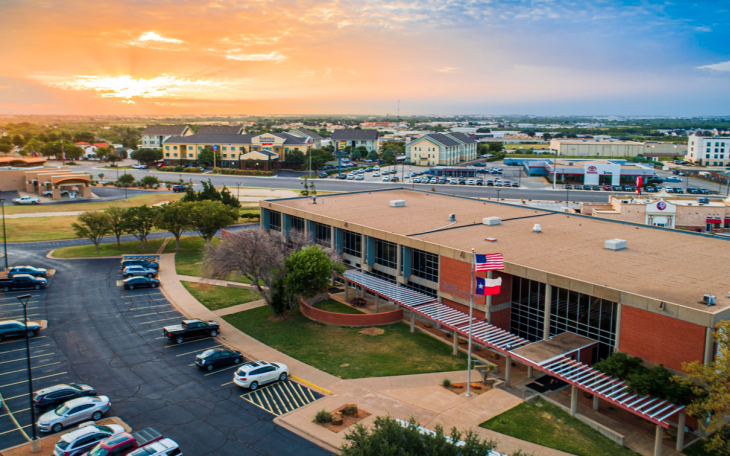“I have an interest to continue serving the community. This is an opportunity to use my knowledge and experience to do that,” Elizabeth Grindstaff said, explaining why she is running for the Single Member District 5 City Council seat.
“Whether its Santa Rita, Bryant Park or the College Hills area, I think this is a district where the citizens want preservation of their neighborhoods, effective law enforcement and fire protection, and good code enforcement. They want to see the character of their city remain the same; whatever identifies ourselves as San Angelo, they want to preserve that. And they are very interested in water and what the future looks like,” she said.
On water, Grindstaff believes that a few days of down-pouring rain is a temporary fix. “We’ll never be a Houston or a Dallas when it comes to rainfall,” she said.
For San Angelo to better adapt to the reality of the water shortage, she wants to try benchmarking other cities facing similar challenges and utilize whatever incentives the city can offer to help move the culture of San Angelo towards conservation.
“A month ago there was a gentleman [at a Council meeting] that wanted to make a special curb cut that would preserve water, I think that was a pretty good idea,” Grindstaff said. But she wonders if anyone on Council has instructed staff to find ideas the City can institutionalize--like curb cutting--that will reward conservation with incentives.
Grindstaff’s incentive idea is to use the water rate, city property tax, or both, to encourage homeowners to xeriscape, for example. Her passion is to find other water-saving ideas and match incentives to them.
Thinking outside-the-box on urban planning is something Grindstaff has been doing her entire career. Her specialty has been urban renewal and city zoning.
Elizabeth Grindstaff’s first brush with urban revitalization was when she used to count Don Ganter’s money while working a job that helped pay for college. Ganter was the owner of the infamous Dixie Chicken. In 1986, The Chicken was a dive bar, but it soon became the epicenter of the revitalization of College Station's Northgate Business District in the 2000s. Northgate is on the north side of Texas A&M University, Grindstaff’s alma mater.
Her original objective at Aggieland was to become an architect; spending countless hours building pasteboard models of houses and shopping centers at the Langford Architecture Building on campus.
Somewhere along the way, Grindstaff's focus changed from becoming an architect. “I also saw my interest shift more to community development rather than single building projects,” Grindstaff said.
So, she redirected her destiny after earning her first degree in Environmental Design by staying in school to earn a Master’s Degree in Urban Planning from A&M.
Her first job out of college was the Director of Economic Development for the City of Hillsboro, the town south of the Metroplex where I-35 splits into a western and eastern roadway before heading into Fort Worth and Dallas respectively.
In a small town, Grindstaff said, her title meant very little. “It meant I took care of anything that the city manager didn’t want to do,” she said. Her most visible accomplishment was the Southwest Outlet Center, a popular outlet mall when outlet malls were the rage. “It was a good experience to work in a small community because I could get my hands on a lot of things,” Grindstaff said.
Success at Hillsboro brought her back to Bryan, the older sister city of College Station. There, she organized and developed Bryan’s Main Street Program, among the first such programs in the nation. This urban revitalization program was instrumental in bringing the dying city-center of Bryan back to life. Today, former students can enjoy one of the more unique hotel experiences in the country by staying at the historic LaSalle Hotel in downtown Bryan. While there, they can dine in unique restaurants up and down Bryan’s old Main Street Historic District.
Grindstaff sees parallels to the success of Bryan’s downtown to San Angelo’s. “There’s nothing wrong with our downtown,” Grindstaff said. “It just takes time.
“What you have in San Angelo is a very large downtown area for the size of our population. And we have some real challenges in these taller buildings that don’t have the upper floors occupied. But when you compare San Angelo’s downtown to what’s happening in Abilene, which I was a part of, San Angelo is far more successful,” she said.
“You have people wanting to live downtown, living downtown…you have the city working with [entrepreneurs] showing what funding opportunities exist. It’s happening! But it’s a long-term project. I think what you want is a ‘24-hour’ downtown, and ours is getting there,” she said. (She was referring to the popular Dallasite Stanley Marcus of Neiman-Marcus, and his advocacy of a 24-hour downtown in his Dallas Morning News columns and books).
After Bryan, Grindstaff sought a greater challenge by taking a job in Abilene, a city more than twice the size of Bryan. There, she worked her way up to become the interim director of planning.
She worked on the first comprehensive development-plan for the city. “I know that sounds dry, but here’s why comprehensive planning is important: In San Angelo, we’ve seen a lot of interesting rezoning requests,” she said.
"The city planners will reference the comprehensive planning document so that Council can compare those requests with the long-range objectives for a certain area. If a petitioner is requesting a residential area meant for single family housing be rezoned for multi-family apartments, the city’s infrastructure—number of water hookups, or more visibly, roadways--may not be sufficiently developed for the denser population. State law requires that all of these requests be in compliance with the comprehensive plan,” she explained.
City planning in Abilene was invigorating for Grindstaff, but she was worried that “interim” had not been removed from her title in almost a year, and Abilene had just hired a new city manager. That is when fellow Aggie and Assistant City Manager Rick Weise invited Grindstaff to apply for the Planning Director job with the City of San Angelo in 2005.
“We moved down here and absolutely fell in love with the place,” she said.
As the head of Planning, Grindstaff pushed through changes to the existing comprehensive plan that made downtown easier to revitalize, and directed the focus of future development in San Angelo to key “centers” of growth.
One of the benefits of a good comprehensive plan is that it deters what Grindstaff calls “leapfrog” development. That is when a subdivision developer attempts to build a housing area far away from other developments, forcing the city to spend unnecessary money on utilities infrastructure, fire department coverage, and police patrolling. “That is expensive to the general taxpayer,” she said. “That is why you want to see the city in a more orderly growth pattern.”
On commercial development, Grindstaff has her informed opinions. “It’s all a balance. We want commercial development. We want to foster that, but we want to be somewhat organized. Continuous strip development along street frontage is not desirable. Think about your curb cuts if you did that,” she said.
At the same time, Grindstaff acknowledges that there is always a tension between existing residential neighborhoods and commercial development. One San Angelo area Grindstaff referenced as an example is the Blackshear area, an old residential area that was cut in half by North Bryant Boulevard years ago.
There, commercial development like the new Baymont Suites Hotel, is finally taking root. The zoning is correct, she said, but it will take time for everything to even out. “You don’t have to destroy a neighborhood in order to develop more commercial property,” she said. “There’s always more commercial land available.”
After serving eight years at the City, culminating with the position of Assistant City Manager, Grindstaff left City Hall for the private sector a year ago. Today, she is the Sales and Marketing Director for the Texas Pacifico Railroad. The private-sector experience has shown her what its like to be on the other side of city government and see how it affects business.
The last day for early voting is today, May 6. Election day is May 10.
Subscribe to the LIVE! Daily
Required






Comments
Listed By: Phil Skinner
- Log in or register to post comments
PermalinkListed By: Doctor Ding-bat
- Log in or register to post comments
PermalinkListed By: Rational Texan
- Log in or register to post comments
PermalinkListed By: Bill Richardson
- Log in or register to post comments
PermalinkListed By: Phil Skinner
- Log in or register to post comments
PermalinkListed By: Bill Richardson
- Log in or register to post comments
PermalinkListed By: Bill Richardson
- Log in or register to post comments
PermalinkListed By: OhMy Gosh
- Log in or register to post comments
PermalinkPost a comment to this article here: